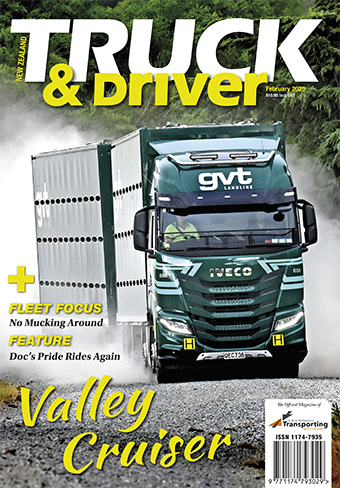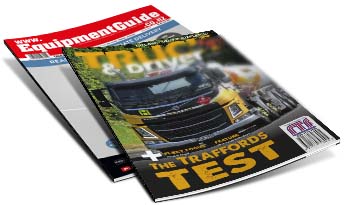Ia Ara Aotearoa Transporting New Zealand News


Rail Safety Week focuses on near-misses
How many times have you witnessed someone rush across a railway level-crossing to beat the barrier arms coming down, or impatiently drive across railway tracks after the lights and bells have started to warn of an oncoming train?
It can be harrowing to watch, yet unfortunately, it's actually a pretty common occurrence around New Zealand and is of increasing concern to KiwiRail and rail safety advocates TrackSafe NZ.
This year's Rail Safety Week campaign reflected this concern by focusing attention on near-misses with people and trains and the stress and trauma that those near-misses create for train drivers and those who witness them.
On average, a train driver suffers from being witness to a near-miss nearly every day around NZ – and every single one of those near-misses has an emotional impact and has, sadly, led to a number of drivers quitting the job.
Close-calls at level-crossings affect other rail staff, witnesses, passengers and freight customers as well, not to mention t
How many times have you witnessed someone rush across a railway level-crossing to beat the barrier arms coming down, or impatiently drive across railway tracks after the lights and bells have started to warn of an oncoming train?
It can be harrowing to watch, yet unfortunately, it's actually a pretty common occurrence around New Zealand and is of increasing concern to KiwiRail and rail safety advocates TrackSafe NZ.
This year's Rail Safety Week campaign reflected this concern by focusing attention on near-misses with people and trains and the stress and trauma that those near-misses create for train drivers and those who witness them.
On average, a train driver suffers from being witness to a near-miss nearly every day around NZ – and every single one of those near-misses has an emotional impact and has, sadly, led to a number of drivers quitting the job.
Close-calls at level-crossings affect other rail staff, witnesses, passengers and freight customers as well, not to mention the pedestrian or motorist who narrowly avoided the collision.
While no heavy vehicles were involved in the 18 public level-crossing collisions for the year until the end of June, of the 299 near-miss incidents it's alarming that 39 involved heavy vehicles.
"Just because trucks were not involved in level crossing collisions last year should not give us a false sense of security," says RTF's Nick Leggett.
"Thirty-nine near-misses, which represents 13% of the total, shows that heavy vehicles are extremely susceptible to incidents around level crossings.
"Trucks, especially combination vehicles, are long and we know that there are hundreds of level crossings around NZ that are fairly light on safety infrastructure. Many don't have barrier arms, bells or lights – and some also have short stacking distances. This means a long vehicle will not be able to safely clear the crossing before having to stop at an adjacent road intersection."
RTF worked with TrackSafe to design a research project last year that focused on the safety of level crossings from the perspective of truck drivers.
Says Leggett: "It's our hope that the findings of the research, which showed that truck drivers had developed their own strategies to make traversing level-crossings safer, will result in infrastructure improvements to make level-crossings safer for trucks and remove some of the instances of short stacking and poor sight lines."
To illustrate the frequency of near-misses during Rail Safety Week, KiwiRail and TrackSafe installed a series of "near-miss memorials" at various locations around the country. The memorials acknowledge the hundreds of people who have narrowly avoided serious near-miss incidents around railway tracks. The memorials installed around pedestrian areas included a QR code that could be scanned with a smartphone to show a video clip of a real near-miss.
"While none of the videos specifically includes an incident with a truck, many do include motorists who have attempted to sneak across the level crossing before the train arrives," Leggett says.
"The footage is actually pretty hard-hitting and shows just how close some people have come to tragedy.
"You really have to feel for the train drivers, who are absolutely powerless to prevent these incidents. It's easy to understand just how traumatic it must be from where they're sitting in the train cab."
The key messages for motorists out of this year's Rail Safety Week are simple:
Obey the warning signs and look carefully in both directions for trains.
Listen, be aware and pay careful attention to your surroundings.
Trains can approach faster than you think, and can be quiet. They are heavy and cannot stop quickly.
Always ensure there is space on the other side of the crossing for your vehicle.
If you're walking or riding a bike at a level-crossing there are also some simple rules to follow:
Only cross at a formed level-crossing, overpass or underpass.
Remove headphones, stop and always look both ways for trains before crossing the tracks.
Only cross if you are sure there are no trains in sight.
Obey the warning signs at the crossing – if lights are flashing or bells are ringing this means a train is approaching.
If a train has passed or is stopped at the station, always check both ways again to make sure another train is not coming. Two tracks may mean there is a second train on the way.
The Rail Safety Week campaign, including all the near-miss videos, is available at www.nearmisses.co.nz




 + EQUIPMENT GUIDE - FREE
+ EQUIPMENT GUIDE - FREE
